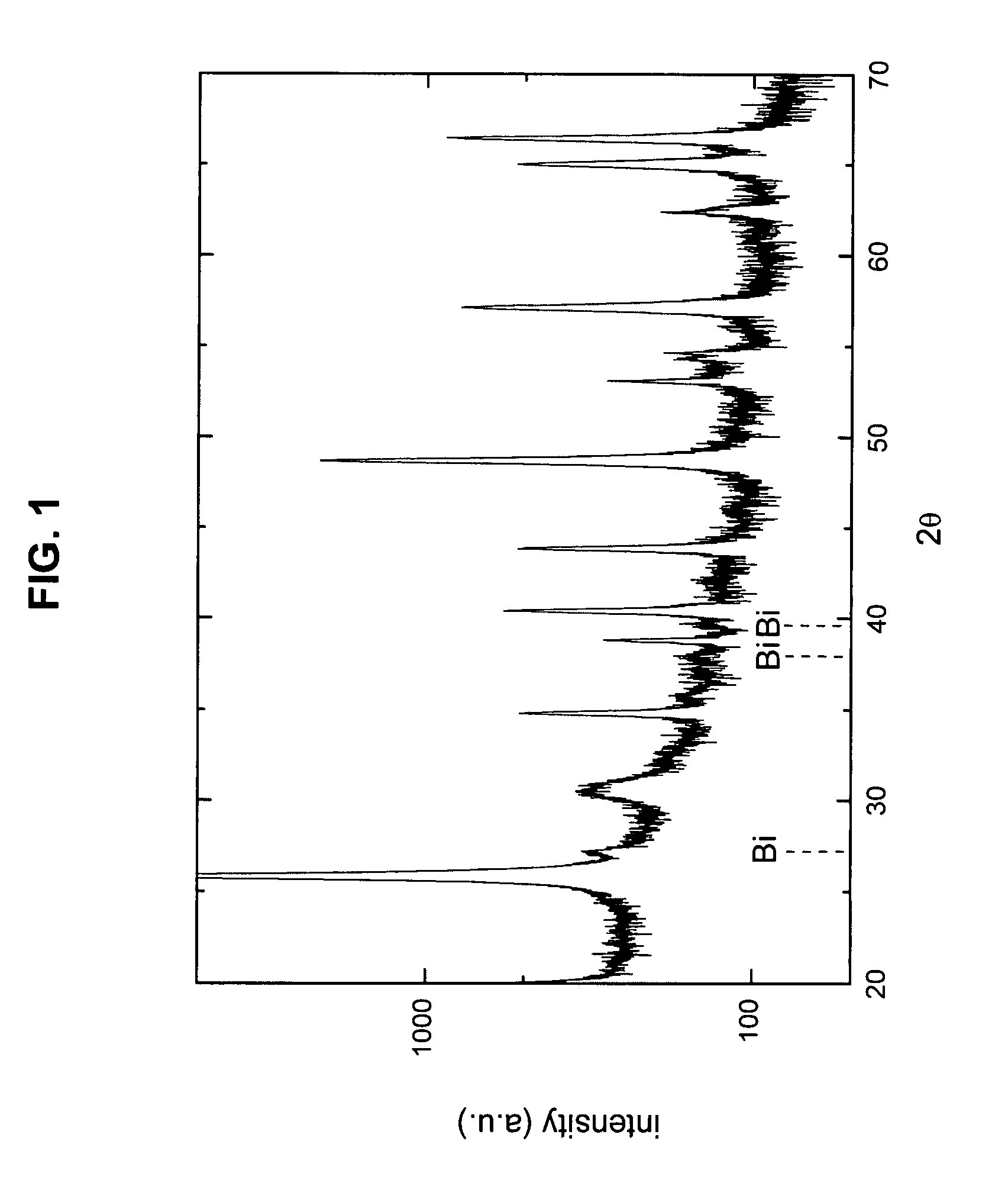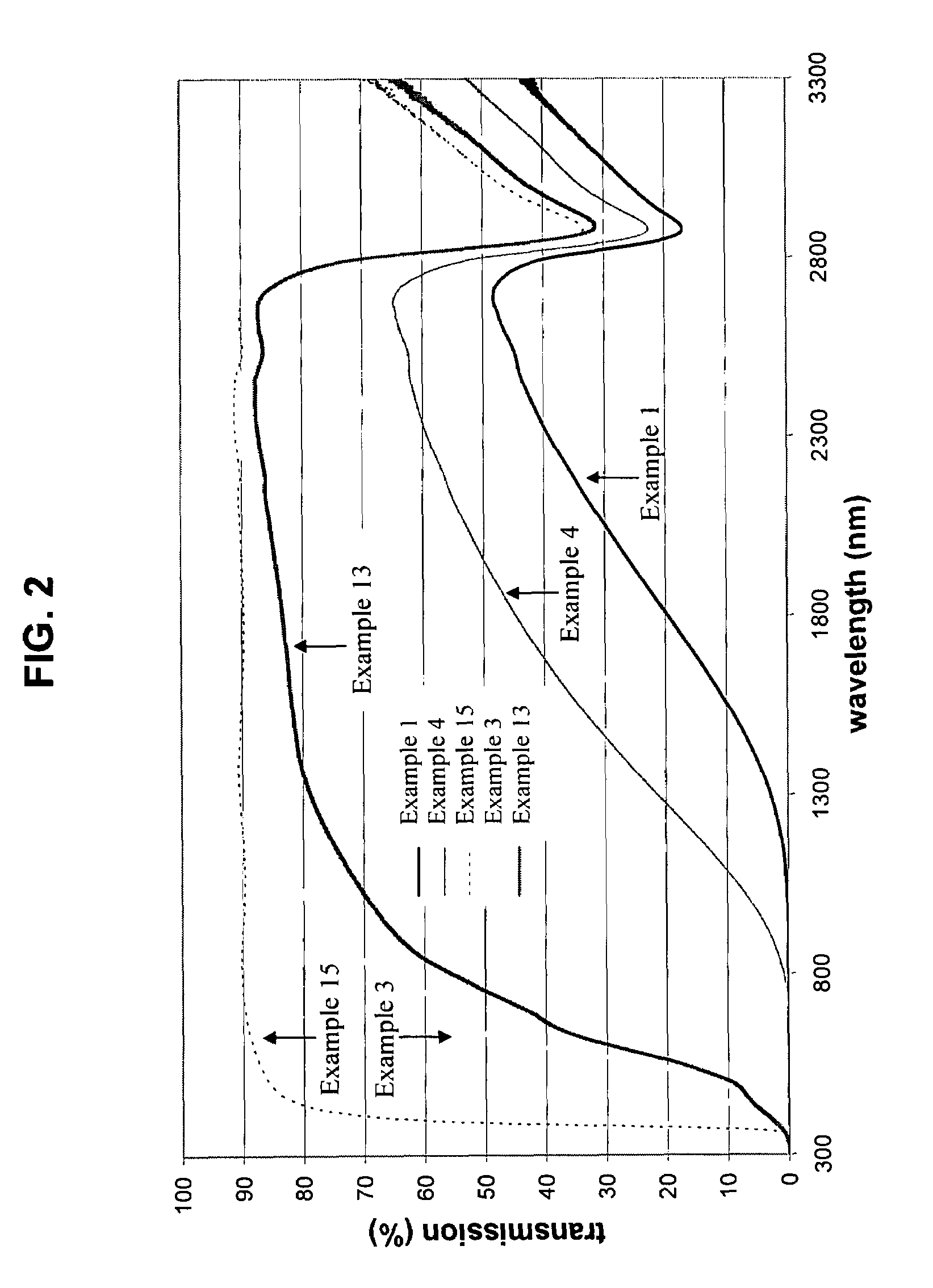Glass-ceramic, articles and fabrication process
a glass-ceramic and glass-ceramic technology, applied in glass tempering apparatus, glass making apparatus, electrical apparatus, etc., can solve the problems of harmful health effects to the human body, potential health hazards of vanadium, etc., and achieve low cost, low transmission, and low viscosity of glass.
- Summary
- Abstract
- Description
- Claims
- Application Information
AI Technical Summary
Benefits of technology
Problems solved by technology
Method used
Image
Examples
examples
[0103]Glass materials having compositions indicated in TABLE I were melted. Crucibles filled with raw starting materials were put into a preheated furnace at 1400° C. This was followed by a gradual increase of the temperature up to 1650-1660° C. at a rate of 2 K / minute. Afterwards, the temperature was held constant for 3 hours before pouring the glass melt onto a preheated graphite plate, where it was roll-pressed to a thickness of 4 mm. Derived glass plates of 20 cm×30 cm were then annealed at 650° C., and slowly cooled afterwards.
[0104]The glassy plates derived in this way were essentially colorless to reddish, dependent on the content of SnO2.
[0105]A subsequent crystallization treatment was then performed according to the ceramming schedule shown in TABLE I.
[0106]Color of the glass-ceramic developed upon ceramming are also indicated in TABLE I.
[0107]Example No. 15 is a comparative example in that it does not comprise bismuth. From this example, it is observed that if no bismuth i...
PUM
| Property | Measurement | Unit |
|---|---|---|
| thickness | aaaaa | aaaaa |
| thickness | aaaaa | aaaaa |
| temperature | aaaaa | aaaaa |
Abstract
Description
Claims
Application Information
 Login to View More
Login to View More - R&D
- Intellectual Property
- Life Sciences
- Materials
- Tech Scout
- Unparalleled Data Quality
- Higher Quality Content
- 60% Fewer Hallucinations
Browse by: Latest US Patents, China's latest patents, Technical Efficacy Thesaurus, Application Domain, Technology Topic, Popular Technical Reports.
© 2025 PatSnap. All rights reserved.Legal|Privacy policy|Modern Slavery Act Transparency Statement|Sitemap|About US| Contact US: help@patsnap.com


